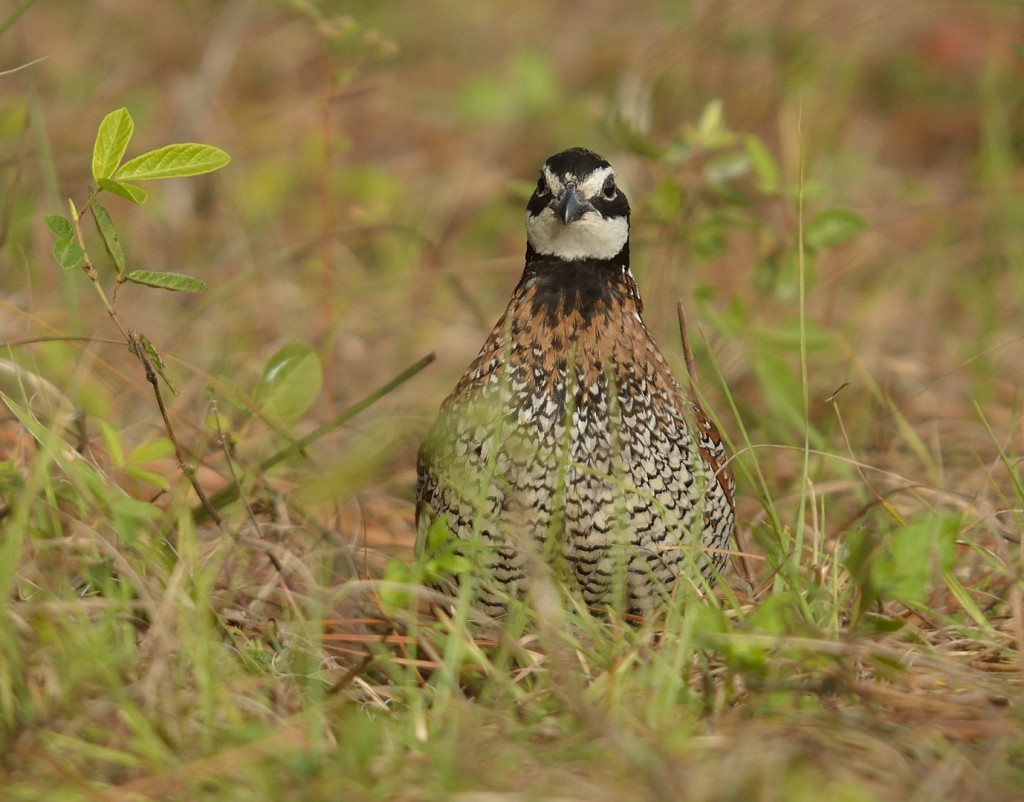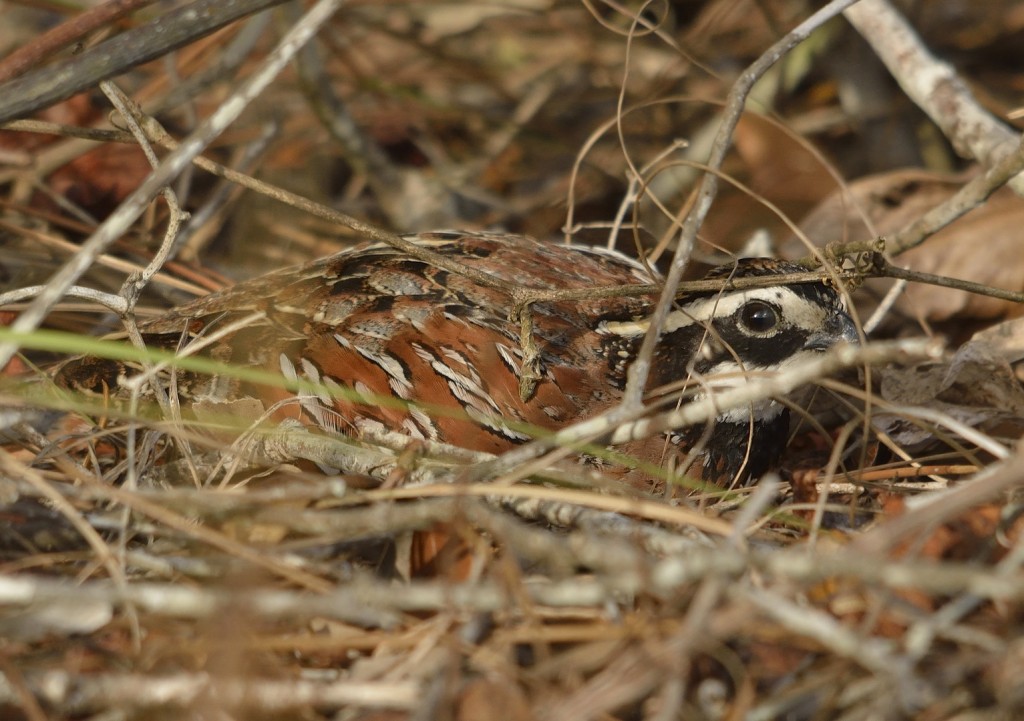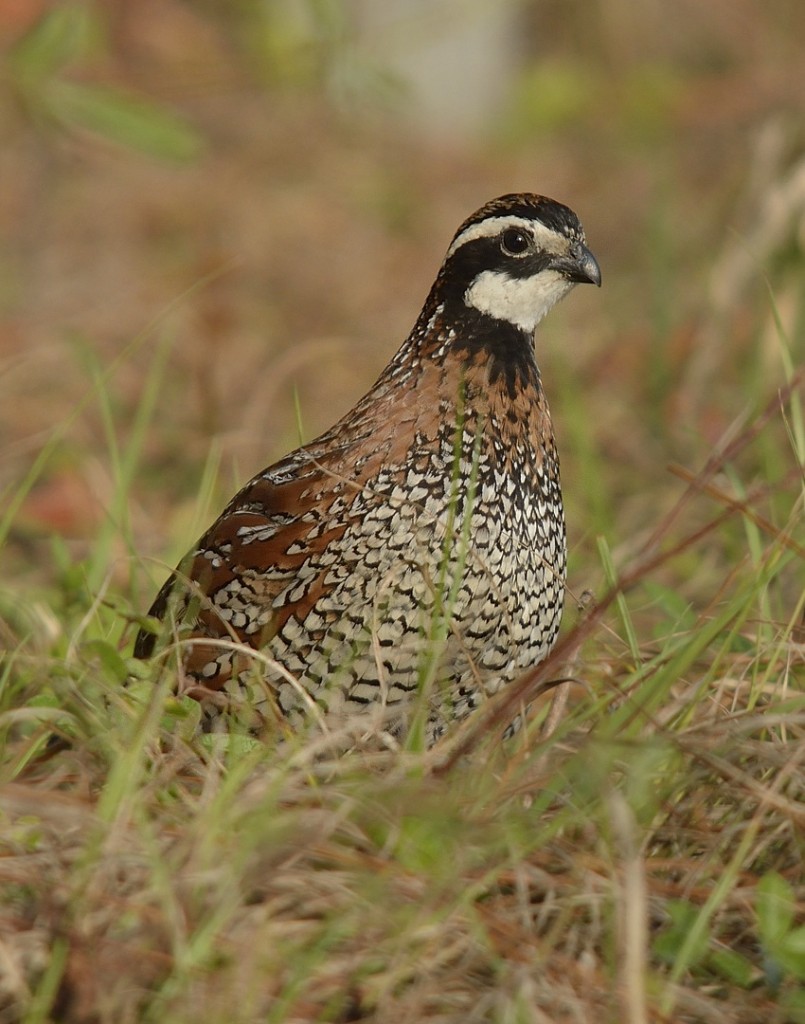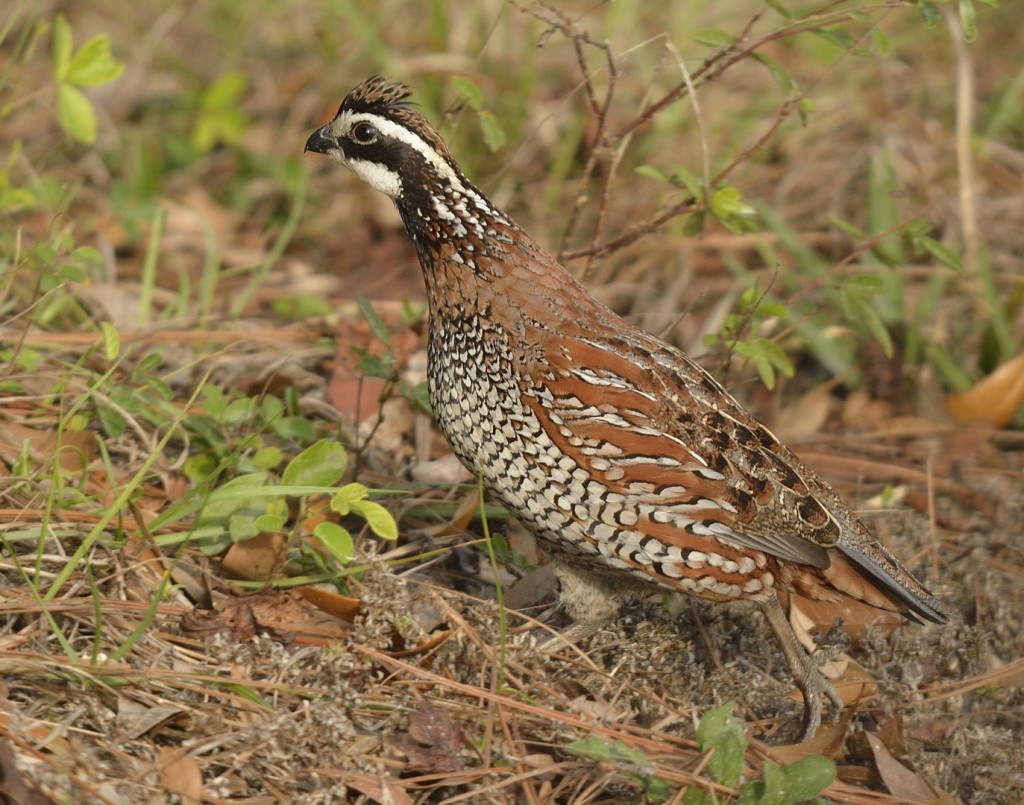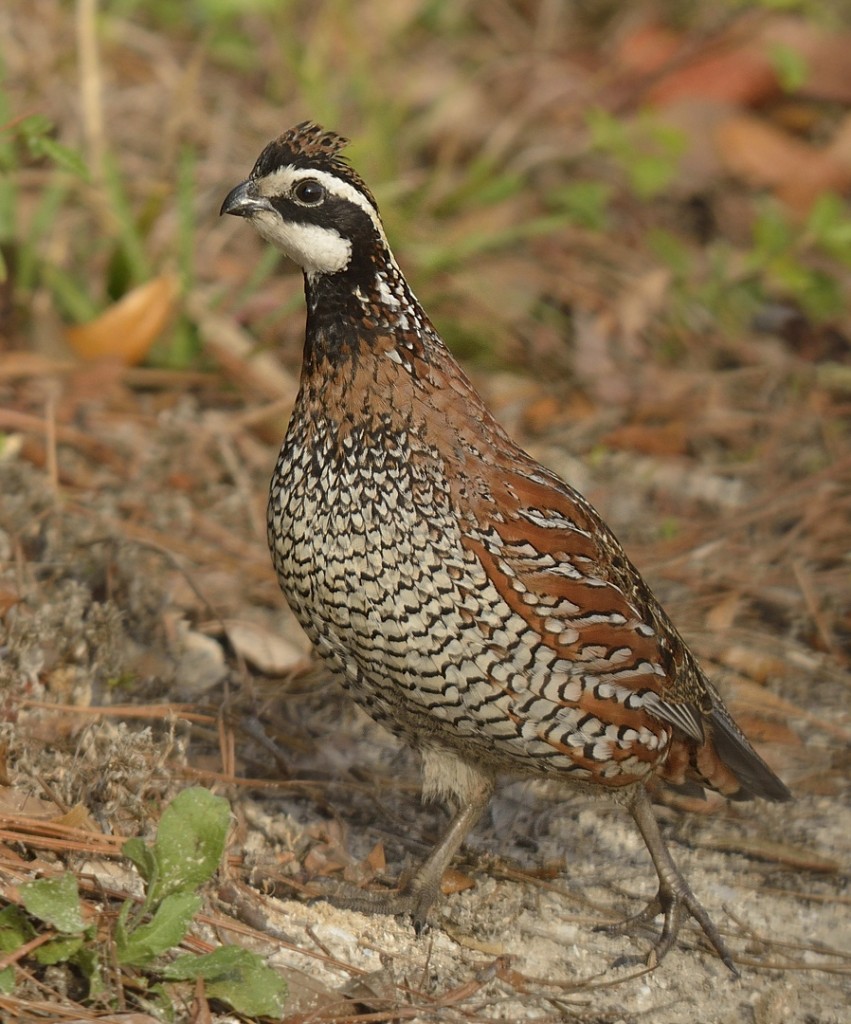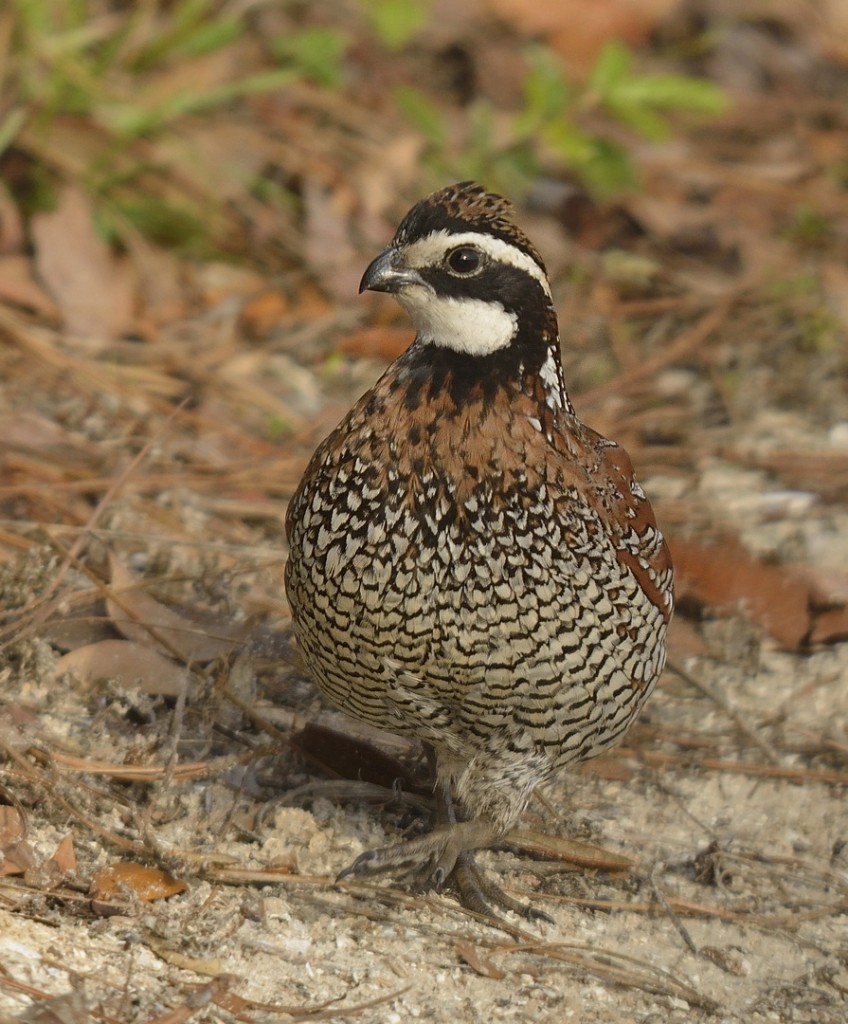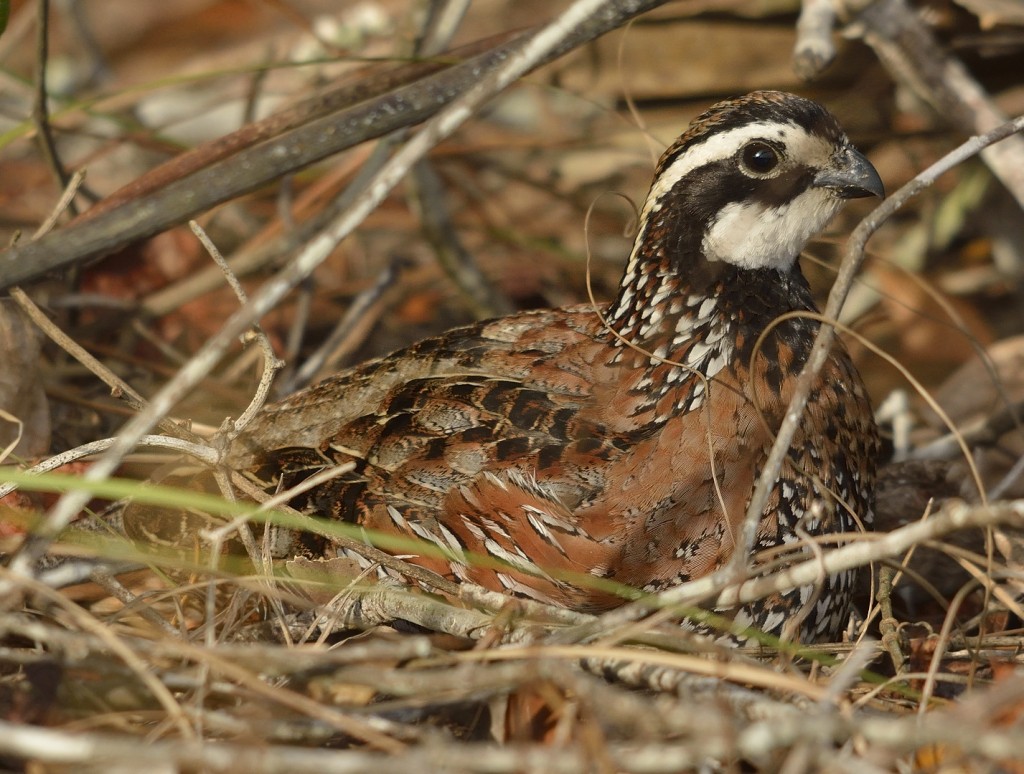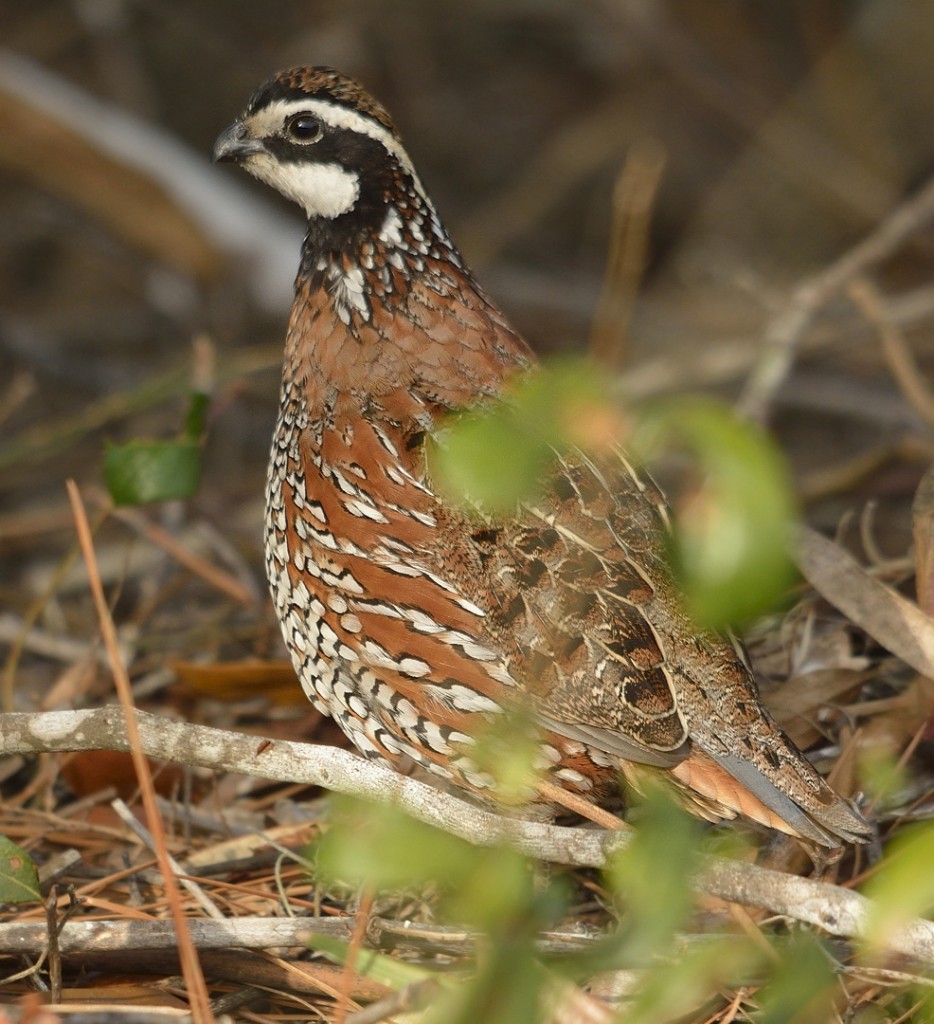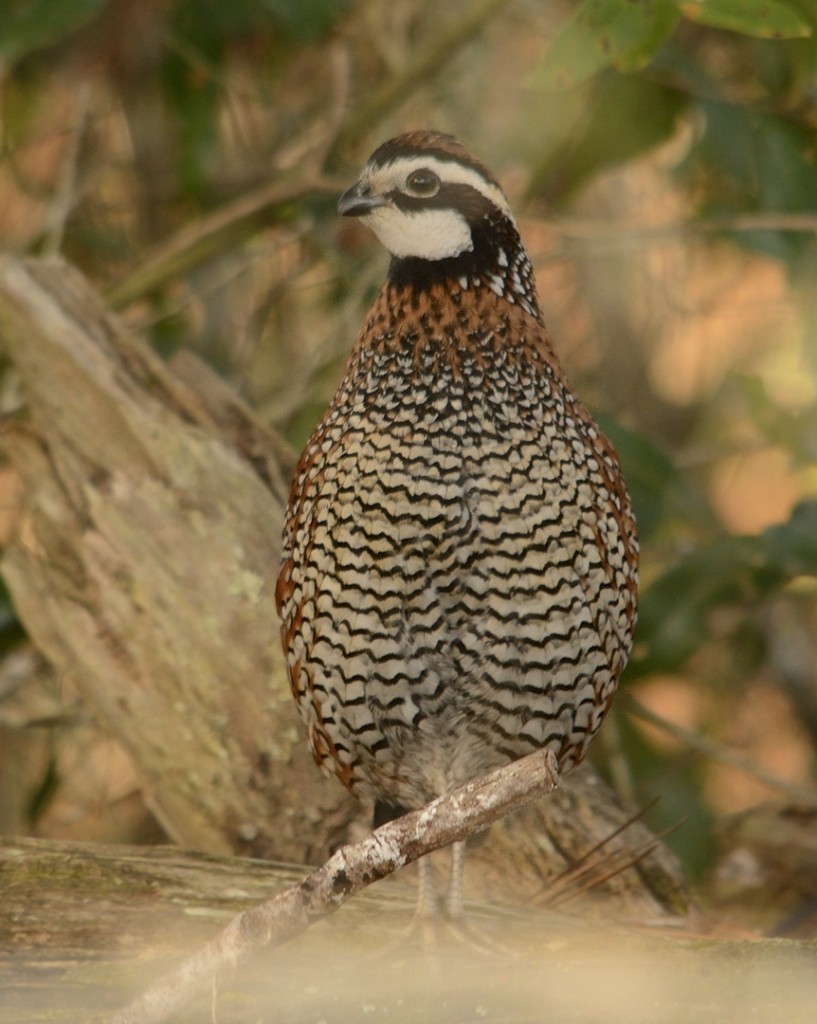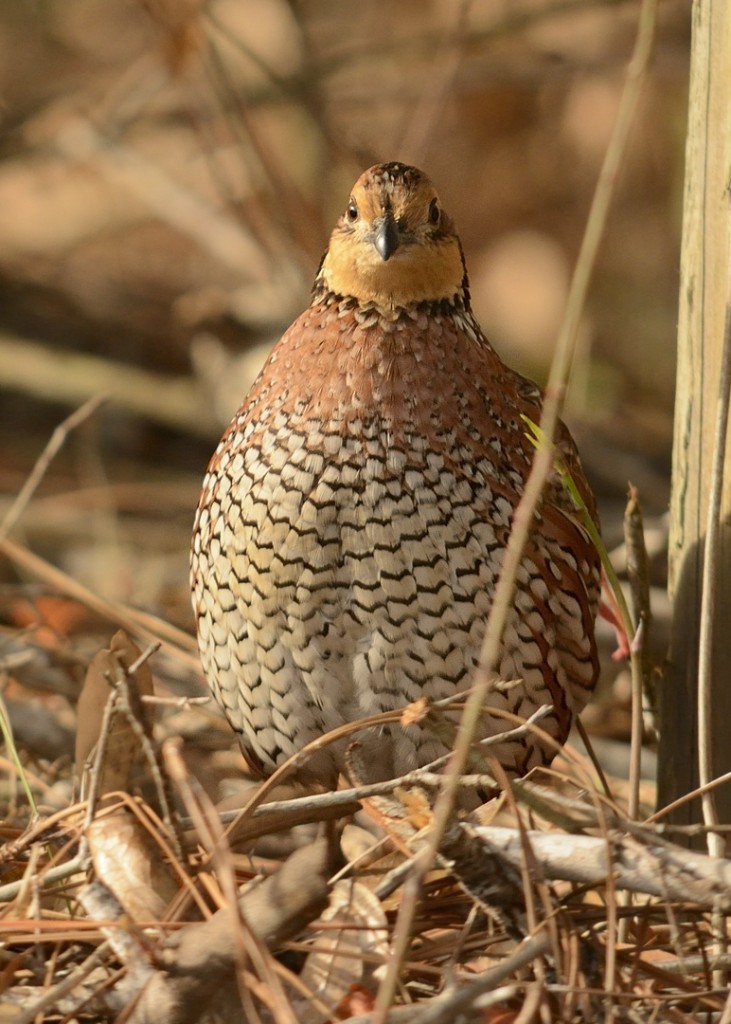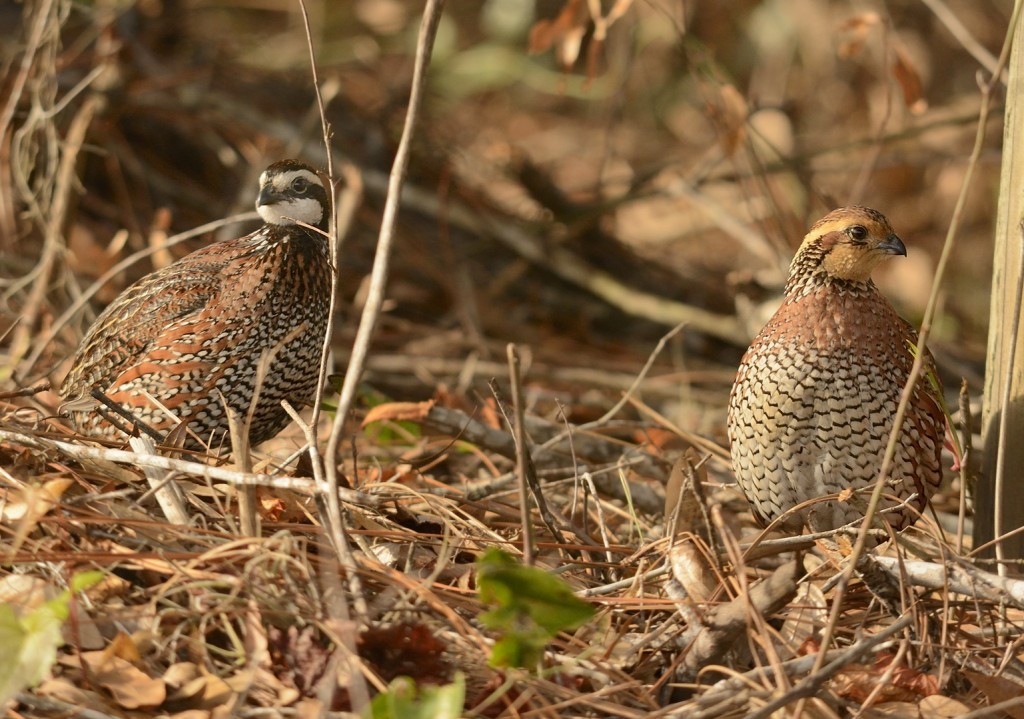January 3, 2015
My somewhat serious resolution for the upcoming year is to increase the frequency of Volusia Naturalist posts. To that end, I’m initiating the year with a new type of post – an image gallery. For those times when I don’t have much to say, but want to share some photos of my adventures.
The photos in this set were taken over several days just before the new year. All of the photos are hyperlinked to larger versions. We spent most of our time in the Fargo area, at Stephen Foster State Park, with one afternoon trip to the east side of the Okefenokee at the Suwannee Canal Recreation Area, near Folkston.
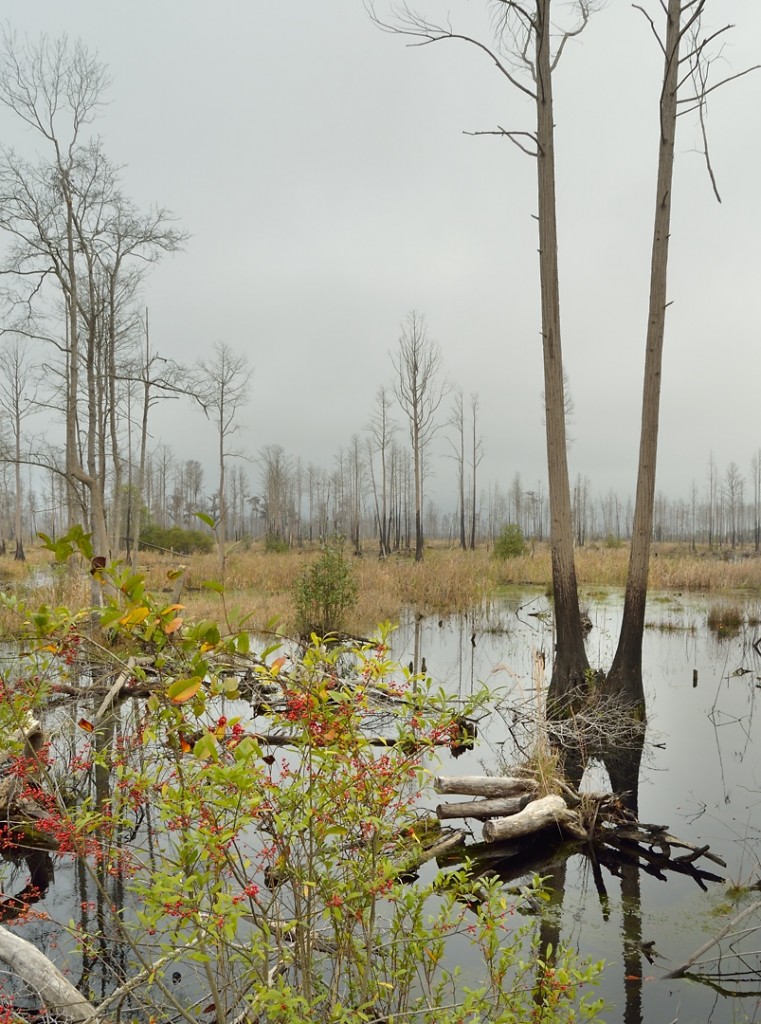
A gray morning in the Okefenokee Swamp. This is in Stephen Foster State Park, on the west side of the Okefenokee.
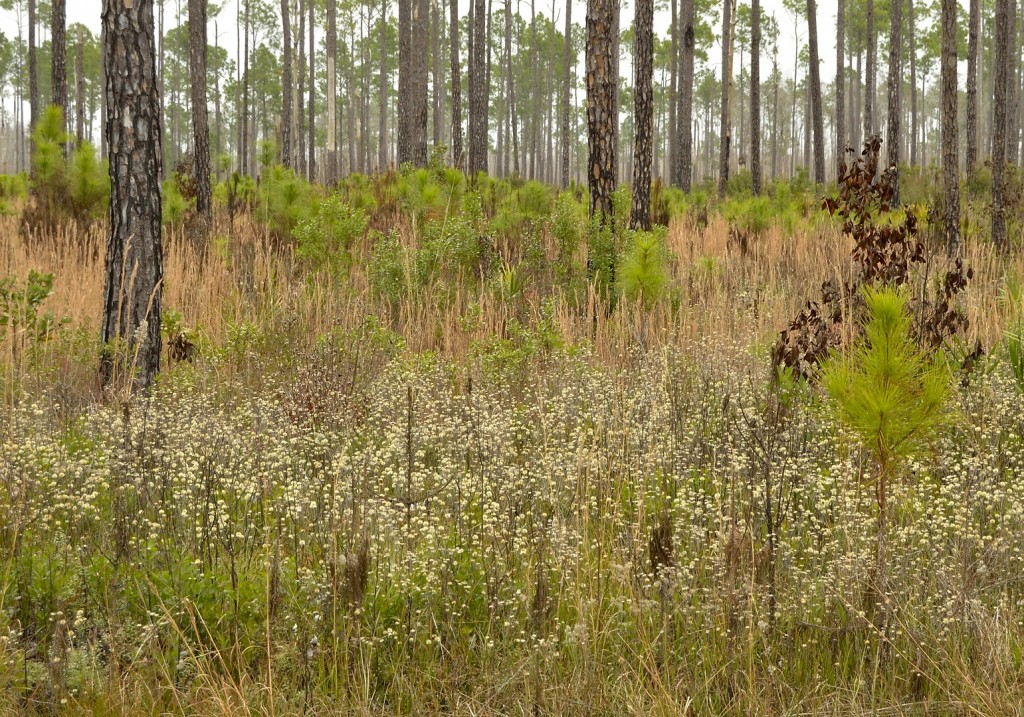
The habitat surrounding the swamp is overwhelmingly dedicated to 20-year rotation timber farming. This includes a significant acreage in Okefenokee NWR. This is a tract of young slash pines that have been thinned and burned. The profuse pale fuzzballs are seed heads of Pityopsis graminifolia.
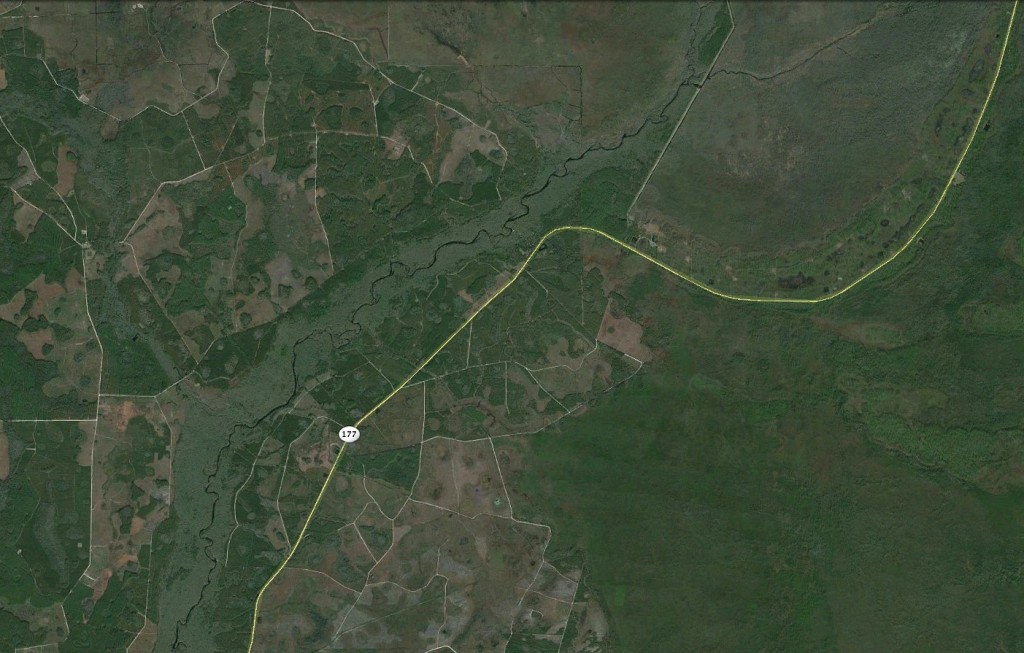
This Google Earth image shows part of the entry road through Okefenokee National Wildlife Refuge (177), leading to Stephen Foster State Park on the western side of the refuge. The Suwannee river near its origin in the Okefenokee is visible above the road. The long straight line in the NE quadrant is the Suwannee River Sill, a several-mile long levee built in the 50’s to control outflow of water from the swamp into the Suwannee. This was an attempt to reduce fire frequency in the swamp during dry years by keeping more water in it. It was a failure. Notice that nearly all of the habitat that isn’t wetland is covered by plots of timber at various stages of the harvest cycle.
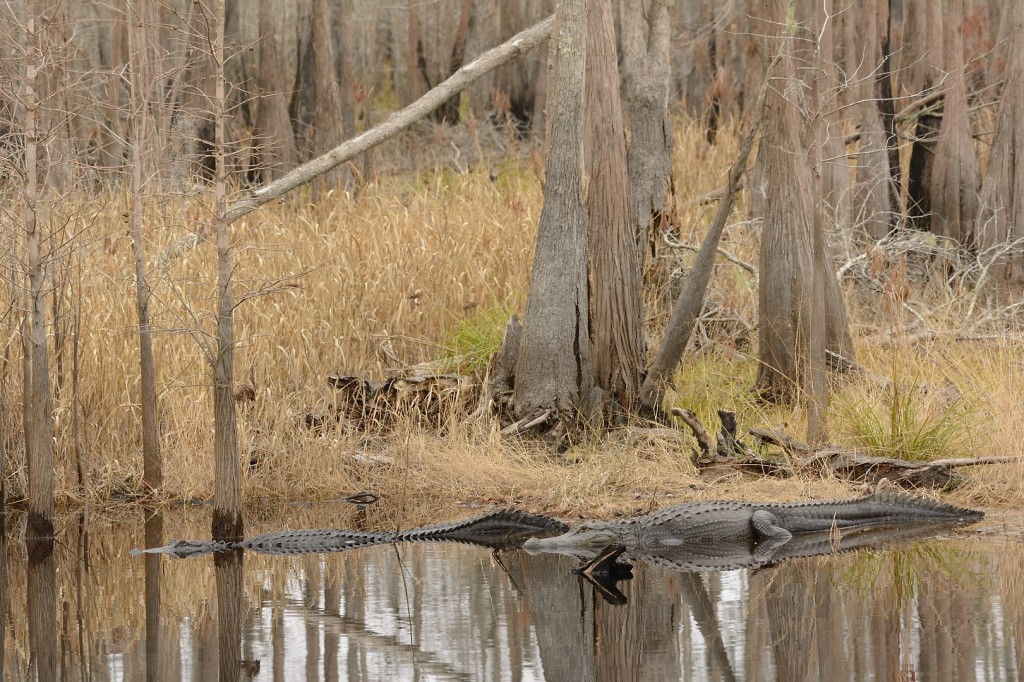
Alligators were out basking on this gray day. These beasts are in the canal paralleling the Suwannee River Sill.
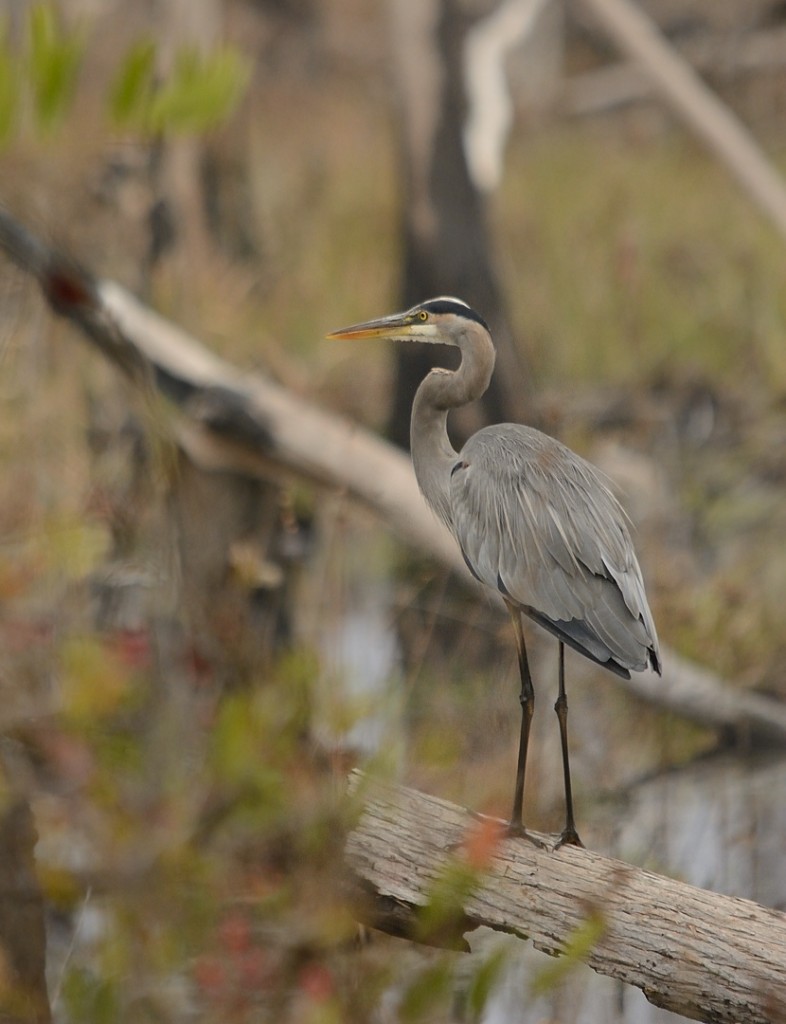
Great blue heron in the swamp. Notice the fire-scarred trunks in the background; many of the plant communities in the swamp are fire-maintained.
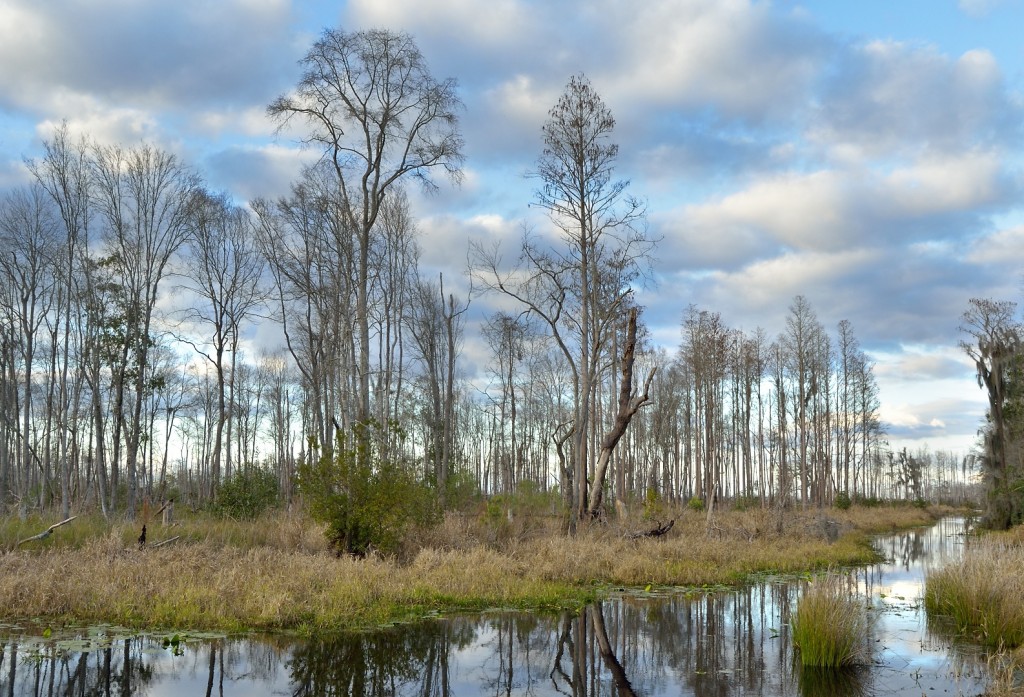
The canal leading from the boat basin in Stephen Foster State Park to the Billy’s Lake section of the middle fork of the Suwannee River.
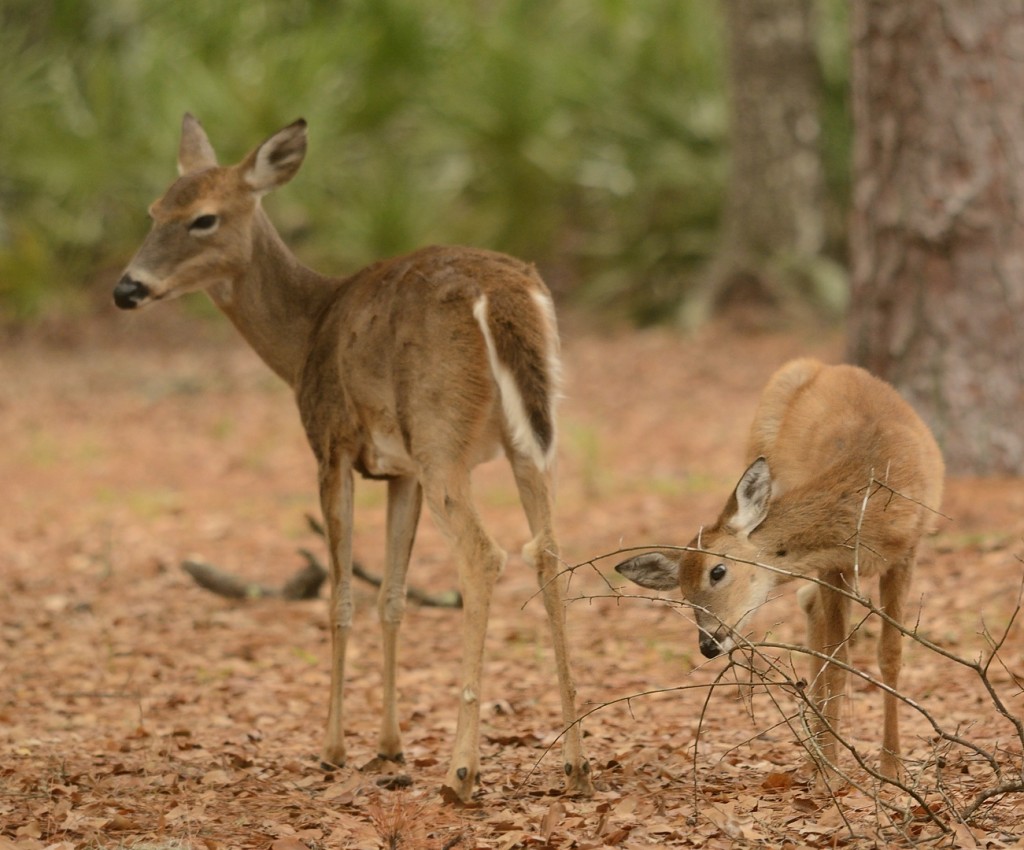
White-tailed deer were common and tame around the cabins at Stephen Foster State Park.
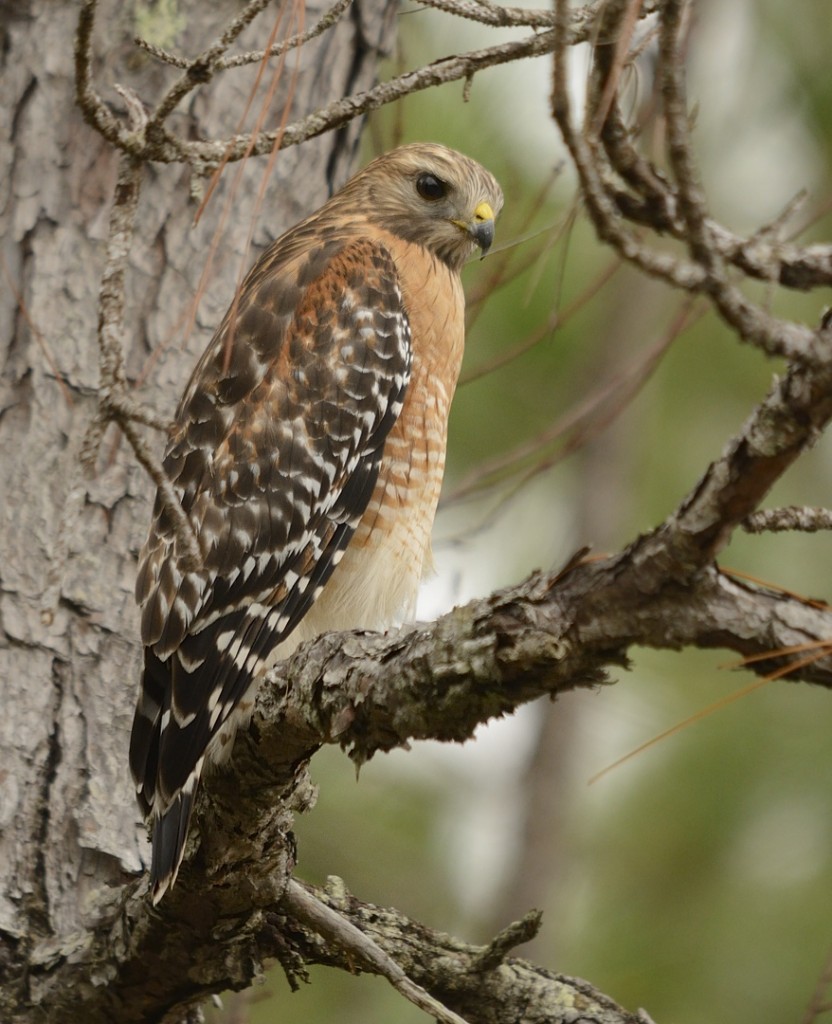
Red-shouldered hawks were abundant, many hunting the the grassy shoulders of the entry road.
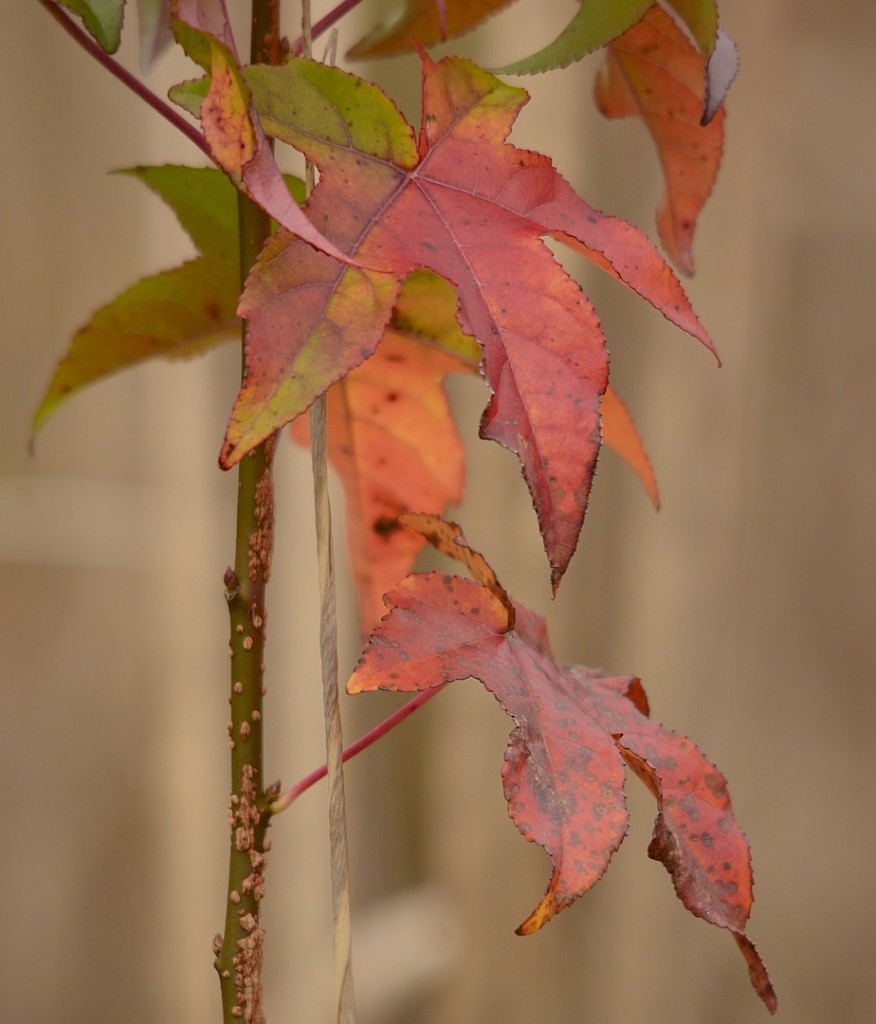
Sweetgum
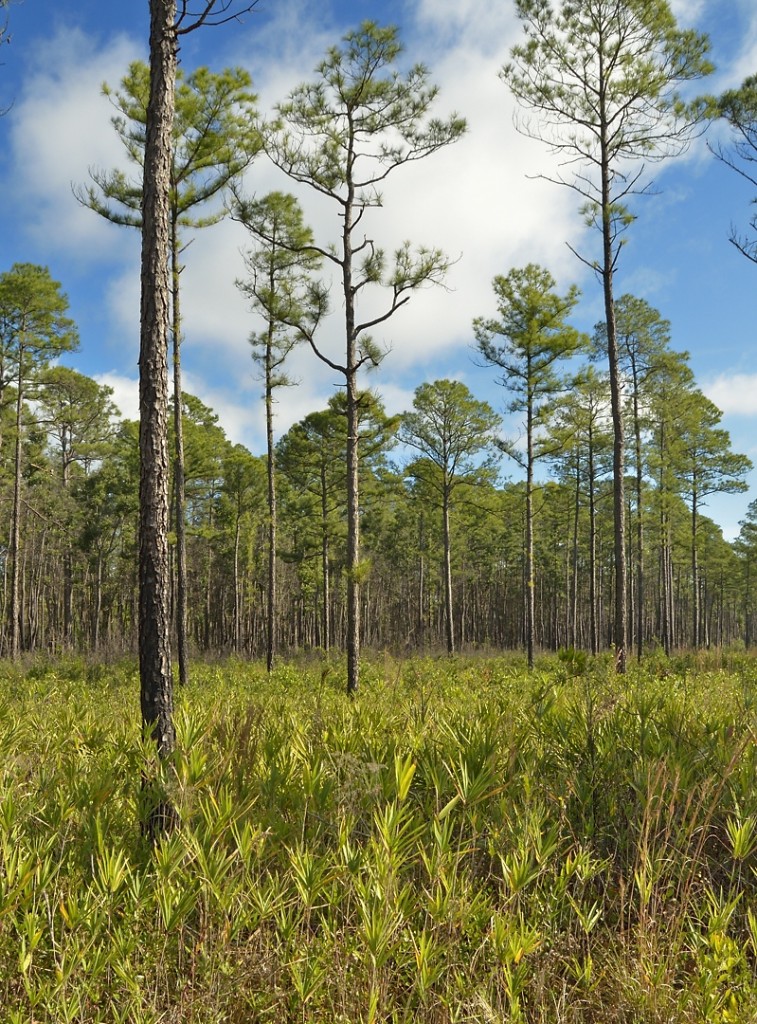
There were only a few hours of decent sun, on Tuesday afternoon, during the 3 days we were there. This pine forest with cane understory is from the Suwannee Canal Recreation Area, on the east side of Okefenokee.
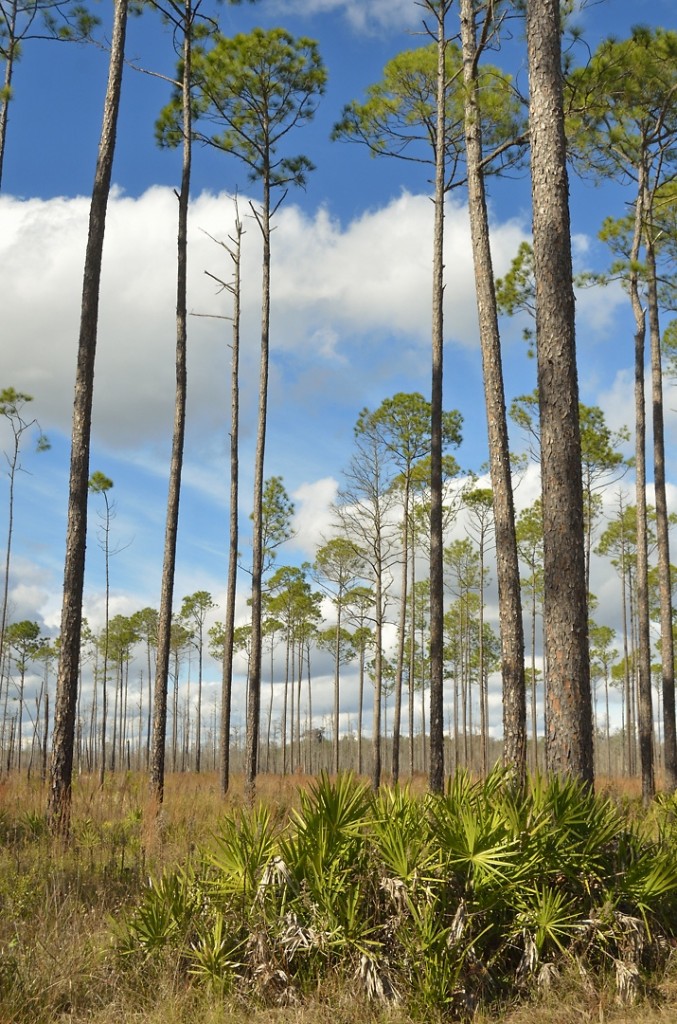
From the Swamp Wildlife Drive in the Suwannee Canal Area.
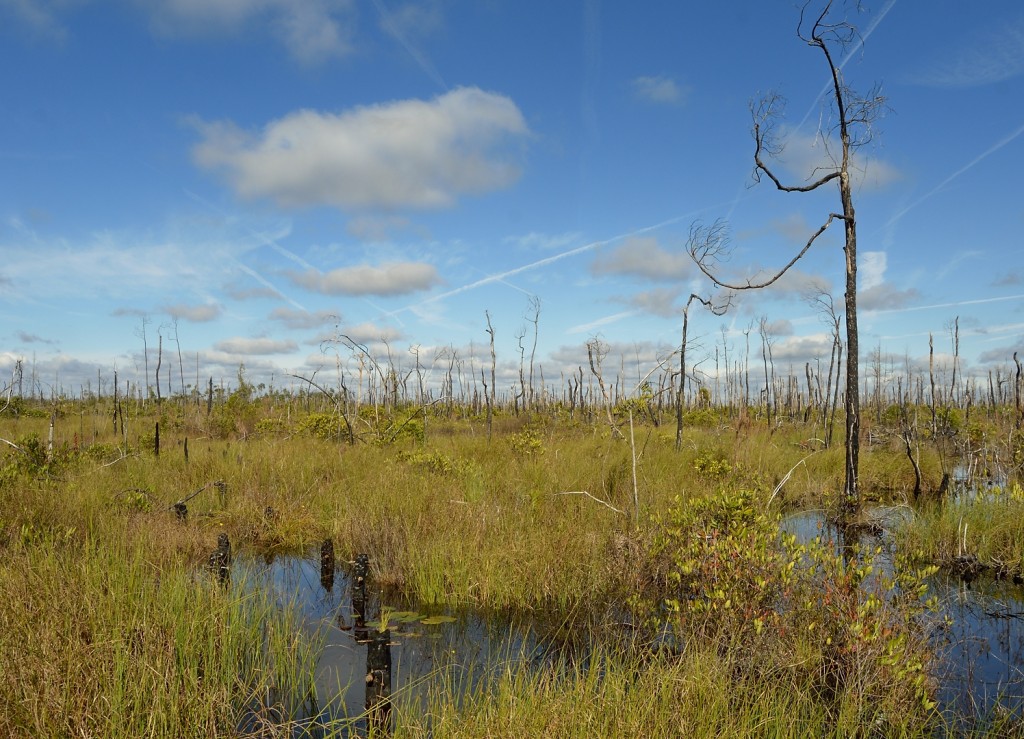
A magnificent 3/4 mile boardwalk into the Chesser Prairie area of the Okefenokee provides stunning views of this landscape still showing the effects of the 2011 Honey Prairie fire, which was allowed to burn. Charred posts from a previous boardwalk are still present.
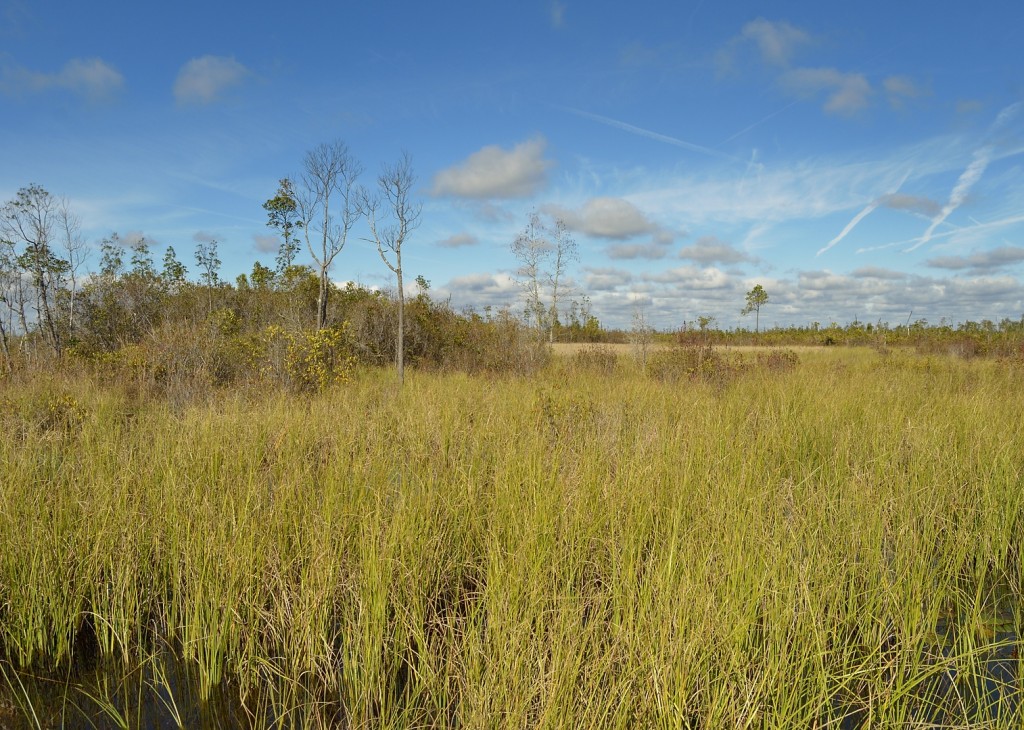
Chesser Prairie, from the boardwalk.
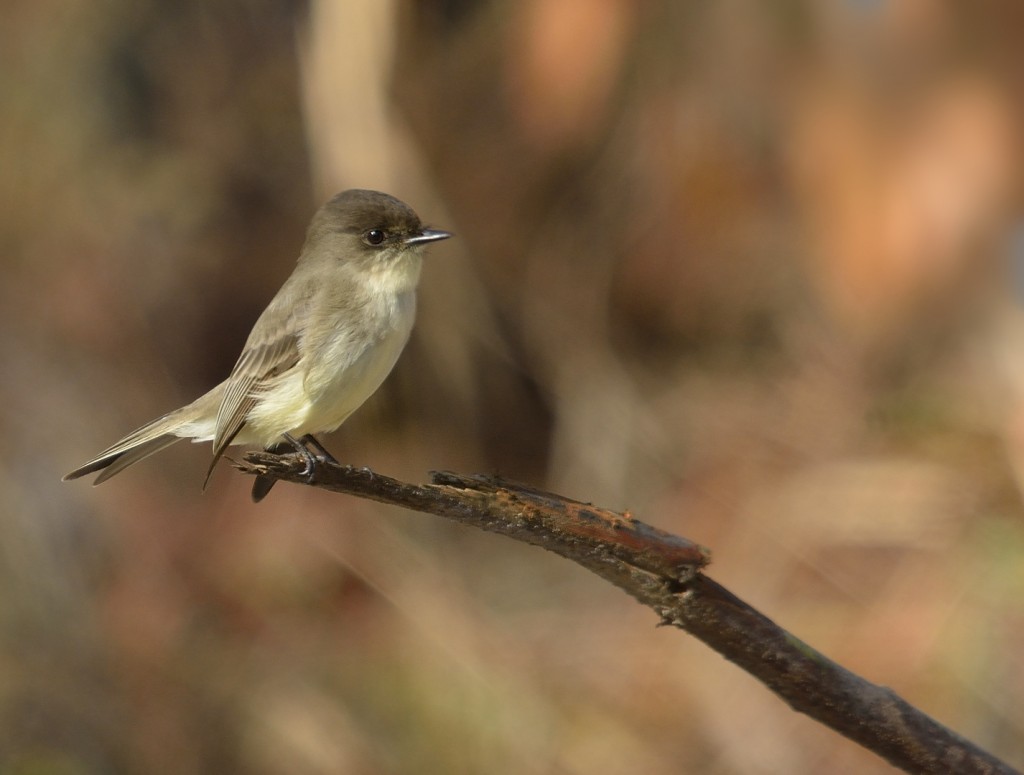
Eastern phoebe from Chesser Island.
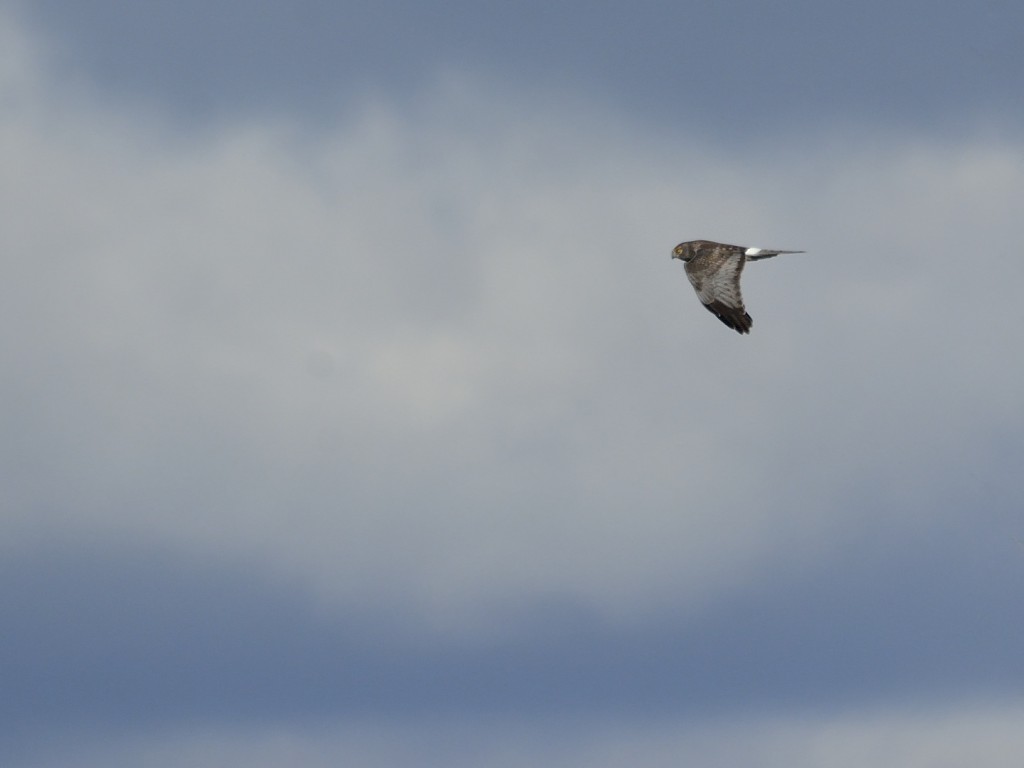
Way too distant shot of a male northern harrier, from the boardwalk. I don’t see male harriers often, though females and immatures are common in winter in Florida.
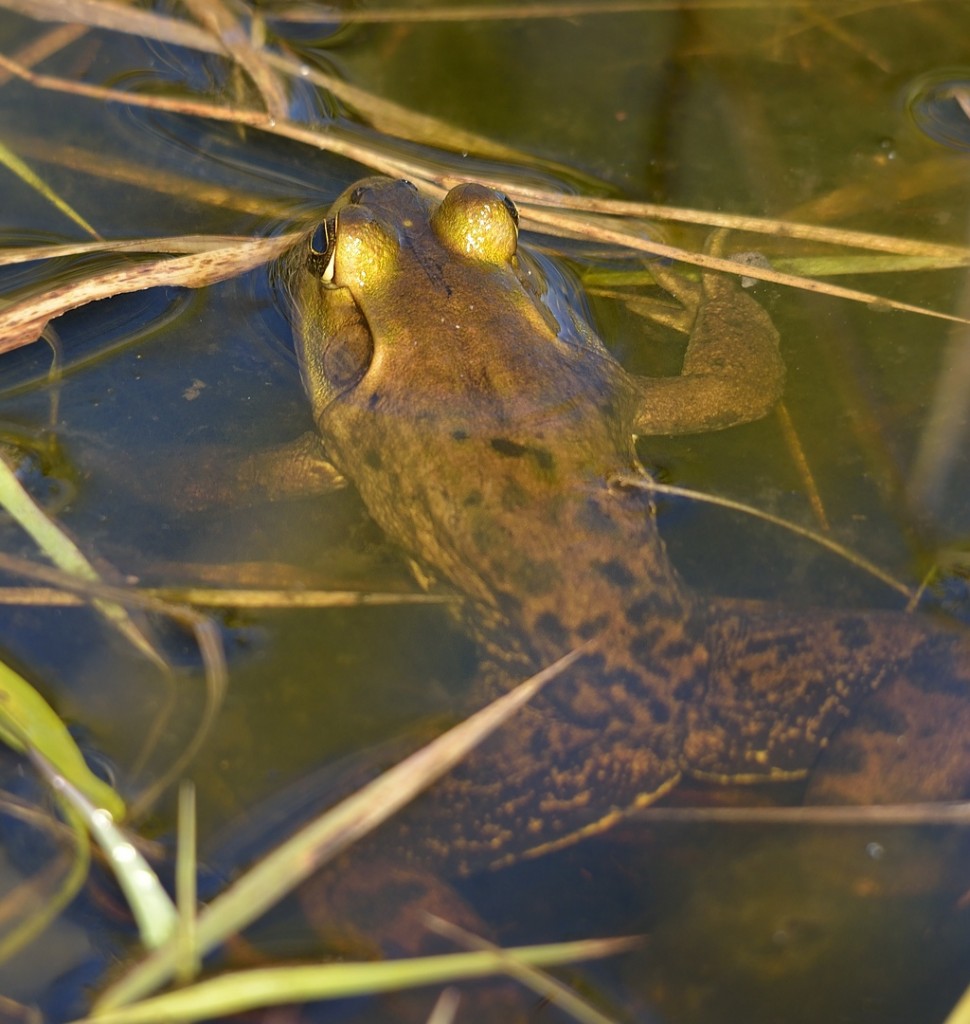
Pig frog? Active in the last week of December. Ranids in Pennsylvania can only dream about that shit.
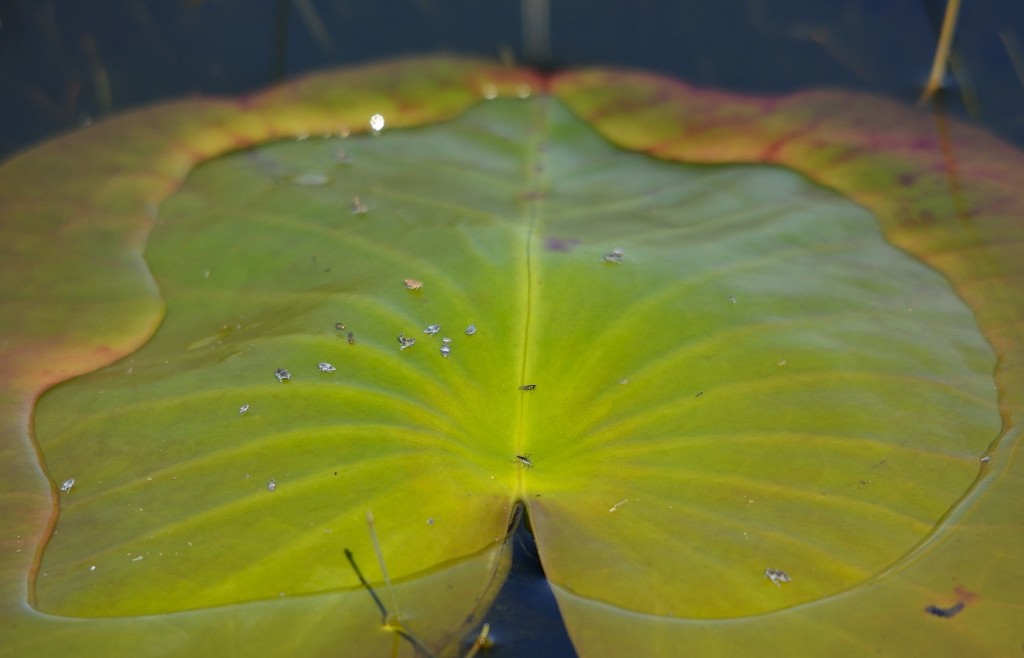
Interesting assemblage of insects in the unwet portion of a water lily leaf. There’s a little water strider (Gerridae) in the notch, a small fly (Ceratopogonidae?) above it, and a “herd” of what look like some kind of leafhopper or planthopper nymphs. You have to click and see this at maximum resolution to see any detail in these tiny insects.
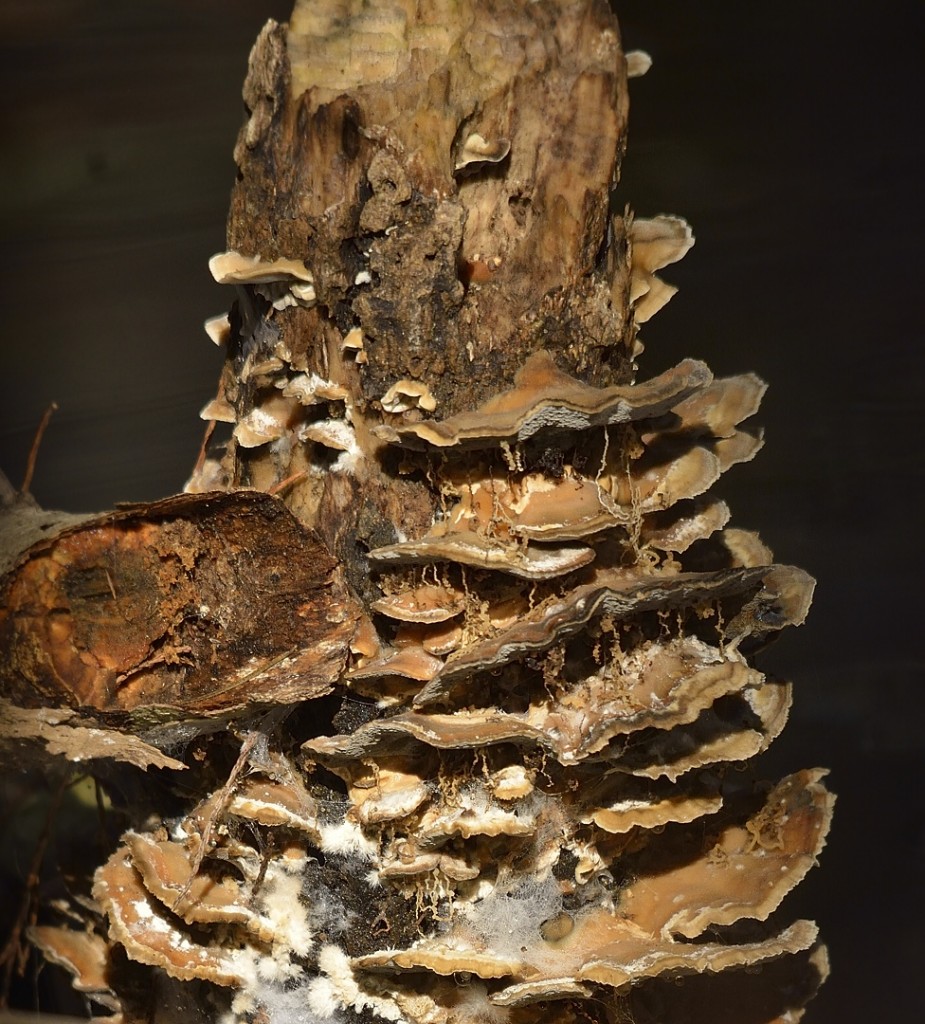
The diversity of fungal structures in this rotting branch was impressive. I have no idea how many species of fungi are visible here.
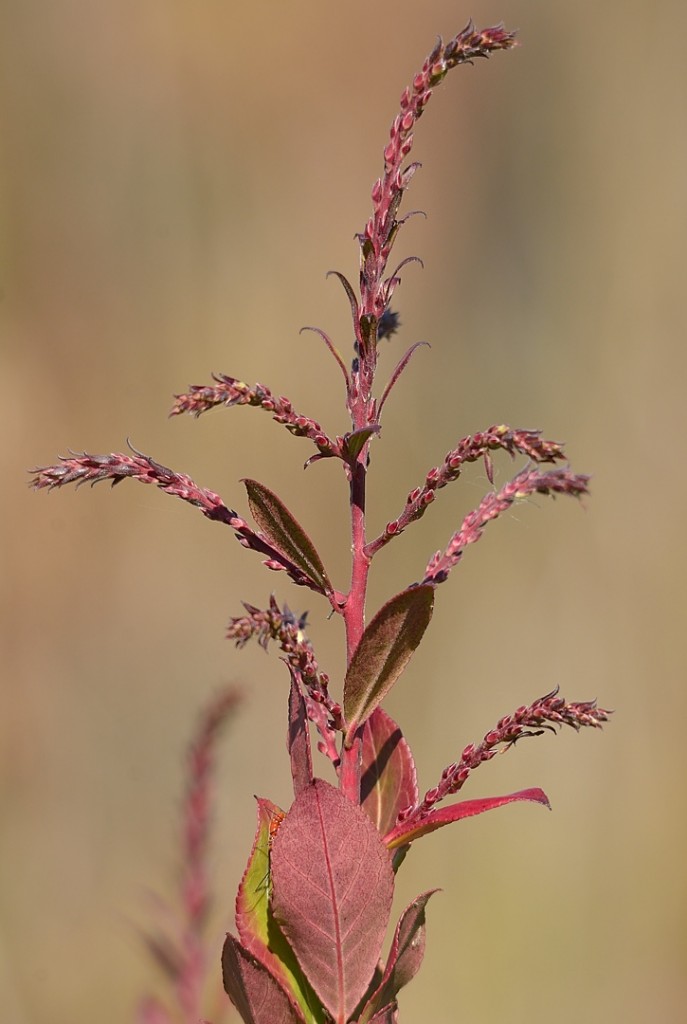
Swamp doghobble, Eubotrys racemosa. These are young flowering spikes that will bloom sometime in early spring.
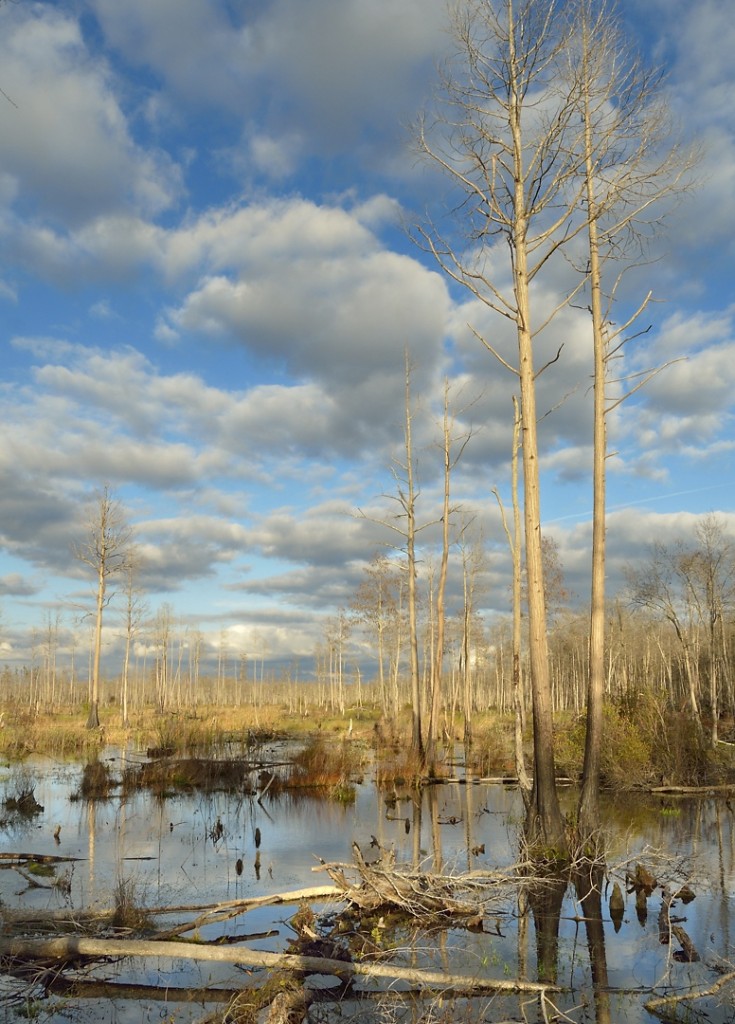
The last afternoon we were there produced the best light of the trip. This shot of the Okefenokee from the boardwalk at Stephen Foster State Park was taken in late afternoon, as the window of sunshine was getting ready to close.
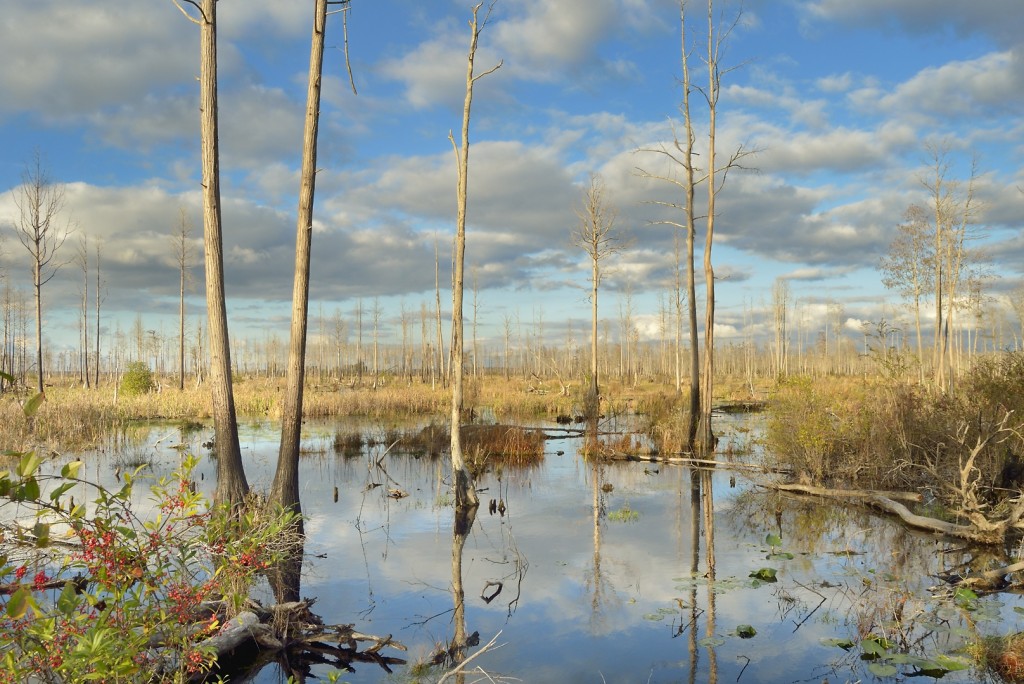
Golden afternoon light can make any shot look decent, but with this kind of view, it’s like taking candy from a baby. Which I’ve never done.
